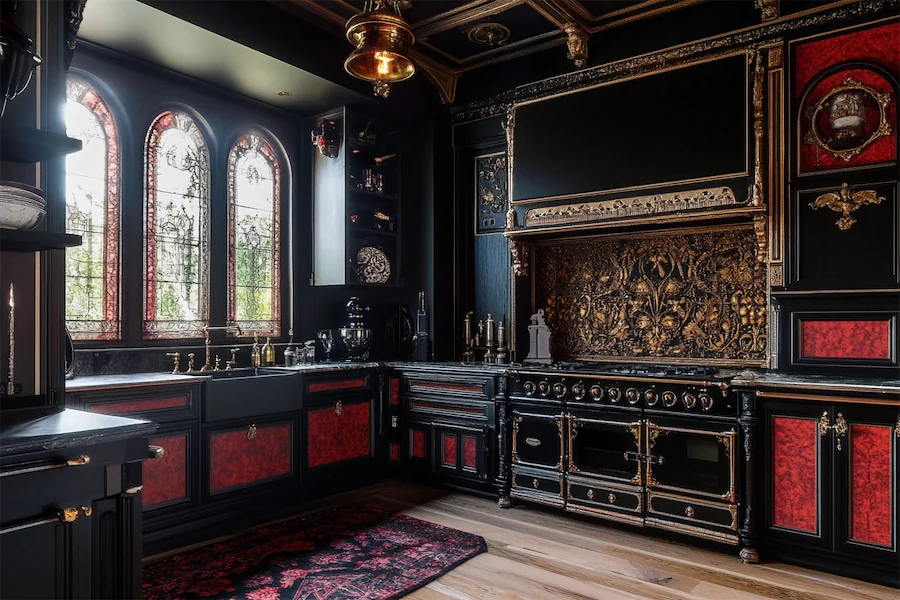A Gothic kitchen draws inspiration from medieval architecture and design, characterized by dramatic elements, intricate details, and a dark, moody ambiance. This article explores the history, key features, applications, and considerations when designing a Gothic kitchen.
Introduction to Gothic Kitchens
Gothic kitchens are known for their bold aesthetics, combining rich color palettes with ornate architectural details. They often feature pointed arches, intricate carvings, and a blend of luxurious materials, creating a space that is both functional and artistically captivating. In modern interpretations, Gothic kitchens can seamlessly incorporate contemporary amenities while maintaining their distinctive style.
History and Origins of Gothic Kitchens
The Gothic architectural style originated in 12th-century Europe, characterized by grand cathedrals and castles with pointed arches, ribbed vaults, and flying buttresses. This style emphasized verticality and light, creating awe-inspiring spaces. In interior design, Gothic elements were incorporated to evoke the grandeur and mystique of medieval times. Gothic kitchens draw from this rich historical context, blending medieval-inspired features with modern functionality.
Key Features of Gothic Kitchens
Gothic kitchens are distinguished by several hallmark features:
- Dark Color Palettes: Utilization of deep, rich hues such as blacks, deep purples, and dark greens to create a dramatic and moody atmosphere.
- Ornate Cabinetry: Cabinets often feature intricate carvings, Gothic arches, and decorative hardware, showcasing craftsmanship and attention to detail.
- Luxurious Materials: Incorporation of high-quality materials like dark woods (e.g., mahogany or walnut), stone countertops, and wrought iron accents to enhance the opulent feel.
- Gothic-Inspired Lighting: Use of chandeliers, candelabras, or pendant lights with medieval design elements to provide both illumination and ambiance.
- Architectural Details: Inclusion of pointed arches, ribbed vaults, and decorative moldings to echo Gothic architectural motifs.
Applications of Gothic Kitchens
The versatility of Gothic kitchen designs allows them to be adapted to various settings:
- Historic Homes: Restoring or renovating kitchens in period homes with Gothic features can enhance the property’s original character.
- Modern Residences: Incorporating Gothic design elements can add a touch of drama and elegance to contemporary kitchens.
- Themed Spaces: Creating a Gothic-inspired kitchen can serve as a unique focal point for homeowners seeking an unconventional and personalized design.
Considerations When Choosing a Gothic Kitchen
When planning a Gothic kitchen, consider the following:
- Balance: While embracing dark color schemes and ornate details, ensure the space remains inviting and functional by balancing with lighter elements or adequate lighting.
- Authenticity: Incorporate genuine or high-quality reproduction Gothic elements to maintain historical accuracy and integrity.
- Integration with Modern Amenities: Seamlessly blend modern appliances and conveniences without compromising the Gothic aesthetic.
- Space and Scale: Consider the size of your kitchen; Gothic designs often feature grand elements that may overwhelm smaller spaces if not proportioned appropriately.
Conclusion
Gothic kitchens offer a unique blend of historical grandeur and modern functionality, creating spaces that are both dramatic and inviting. By understanding their history, key features, and applications, you can design a kitchen that reflects the timeless appeal of Gothic aesthetics, tailored to your personal style and home environment.
